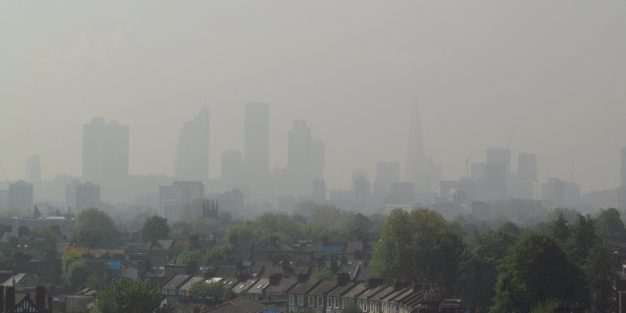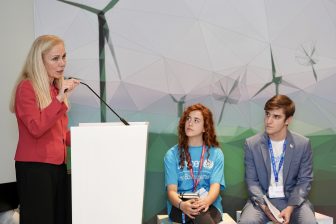
How can London can give its children a greener, cleaner city?
A new report published for the Mayor of London highlights the enormous changes needed to move the city towards a greener future, with cleaner air for children, and net-zero carbon emissions by 2030.
Car traffic must be reduced by nearly a third – 27 per cent – by the end of the decade if London is to have any chance of achieving this ambitious net-zero target.
The toxic air generated in one of the busiest cities in the world is having a hugely negative effect on the health of children and adults alike, with nearly 4,000 premature deaths every year – like Ella Kissi-Debrah, who died of asthma caused by toxic fumes – and countless more children growing up with stunted lungs.
The new analysis shows that more action will be required by London’s policymakers, particularly around reducing vehicle use, but that this cannot be done by government alone and that everyone needs to play their part.
‘Cleaner air for children’
The report, published by Element Energy is, nevertheless, considered to be a ‘wake up call’ for central government which needs to give much better support. Between 2000 and 2018, London achieved a 57 per cent reduction in workplace greenhouse gas emissions, a 40 per cent reduction in emissions from homes, but just a seven per cent reduction in emissions from transport.
Mayor Sadiq Khan has already announced strategies to tackle toxic air, carbon emissions and congestion in the capital by introducing and then expanding the Ultra Low Emission Zone and tightening Low Emission Zone standards – which is expected to lead to a five per cent fall in CO2 emissions from cars and vans in the zone and a 30 per cent cut in toxic nitrogen oxide emissions from road transport. But the new report shows how much more action is required.
Air pollution is also affecting the poorest communities the most: Londoners on lower incomes are more likely to live in areas of the city most badly affected by air pollution and least likely to own a car. Nearly half of Londoners don’t own a car, but they are disproportionally feeling the damaging consequences polluting vehicles are causing. The knock-on effect for the children of parents who do not have a car, and have to walk to school among the fumes, is all too clear.
Options include extending the city’s low emission zone, and adding either clean air or boundary charges, in order to monitor traffic more closely. Subject to consultation and feasibility, any chosen scheme would be implemented by May 2024.
‘A wake-up call for the Government’
The Mayor of London, Sadiq Khan, said: “This new report must act as a stark wake-up call for the Government on the need to provide much greater support to reduce carbon emissions in London. It’s clear the scale of the challenge means we can’t do everything alone.
I’m not willing to stand by and wait when there’s more we can do in London that could make a big difference
“We simply don’t have time to waste. The climate emergency means we only have a small window of opportunity left to reduce carbon emissions to help save the planet, and, despite the world-leading progress we have made over the last few years, there is still far too much toxic air pollution permanently damaging the lungs of young Londoners.
“This is also a matter of social justice – with air pollution hitting the poorest communities the hardest. Londoners on lower incomes are more likely to live in areas of the city most badly affected by air pollution and least likely to own a car. Nearly half of Londoners don’t own a car, but they are disproportionally feeling the damaging consequences polluting vehicles are causing.

Rosamund Adoo-Kissi-Debrah, the mother of Ella (pictured above), and now a vociferous campaigner for clean air, said: “Measures such as road pricing and expanding the Ultra Low Emission Zone will mean everyone’s health will benefit. We need more approaches like this, otherwise children like Ella will continue to die. On Monday 24th January Ella would have turned 18.”
Jemima Hartshorn, Mums for Lungs, said: “The Mayor has re-emphasised his commitment to cleaning up the toxic air by reducing traffic dramatically during his current tenure. Currently thousands of Londoners are still dying prematurely of illnesses linked to air pollution, but with the right schemes in London, this will be a thing of the past. We now call on national Government to give the Mayor the powers and funds to future-proof London and follow his leadership in putting health first.”
The government is continuing with consultations on setting new national air pollution targets, as part of its response to the death of Ella. Its response to the coroner’s Prevention of Future Deaths Report sets out that a number of key measures. They include immediate action to increase public awareness about air pollution. This will include a comprehensive review of existing sources of information – including UK Air and the Daily Air Quality Index (DAQI) – to include more specific messaging for different population groups. This will help health professionals in advising patients when poor air quality is forecast. The Government will also look at working with relevant health charities on longer-term campaigns aimed specifically at vulnerable groups.




